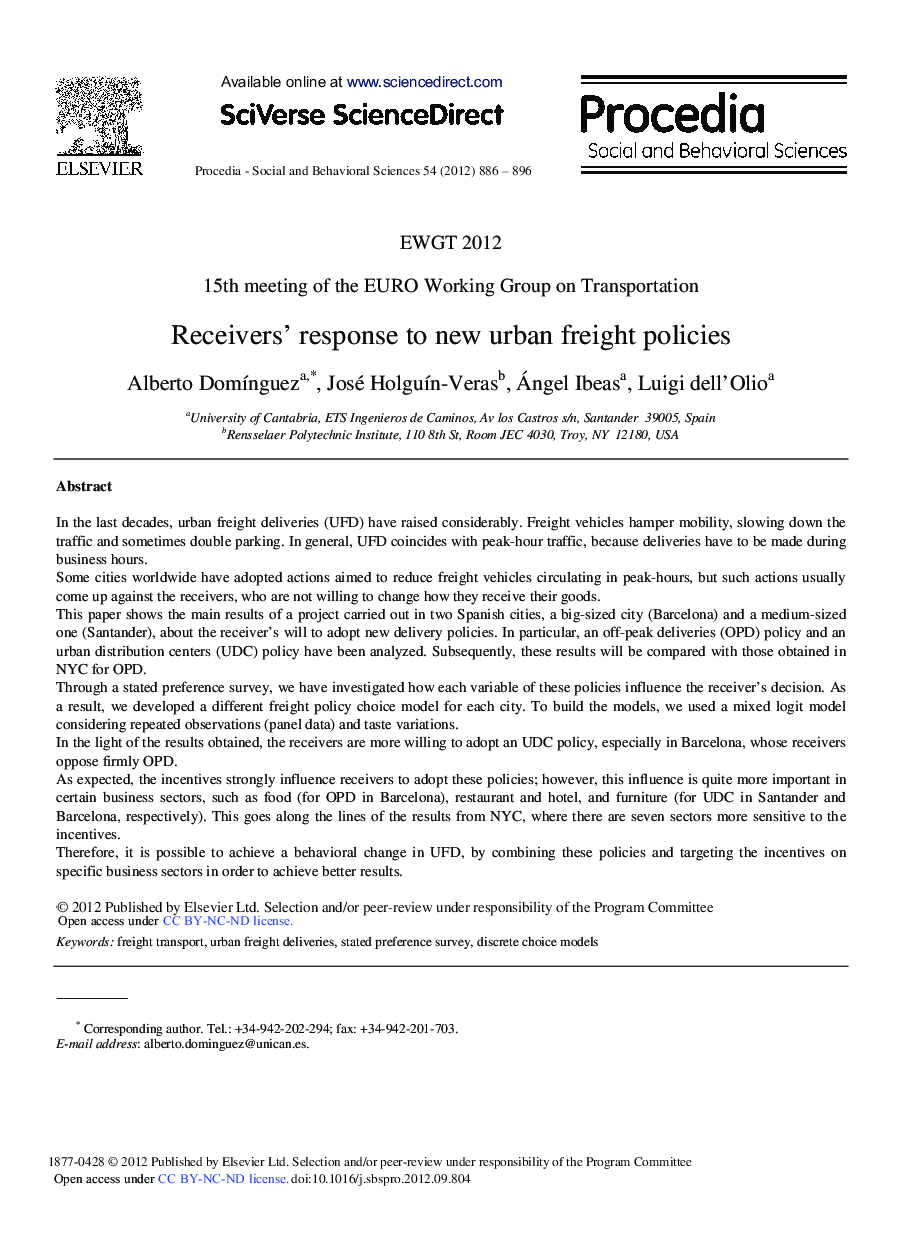| کد مقاله | کد نشریه | سال انتشار | مقاله انگلیسی | نسخه تمام متن |
|---|---|---|---|---|
| 1121423 | 1488505 | 2012 | 11 صفحه PDF | دانلود رایگان |

In the last decades, urban freight deliveries (UFD) have raised considerably. Freight vehicles hamper mobility, slowing down the traffic and sometimes double parking. In general, UFD coincides with peak-hour traffic, because deliveries have to be made during business hours. Some cities worldwide have adopted actions aimed to reduce freight vehicles circulating in peak-hours, but such actions usually come up against the receivers, who are not willing to change how they receive their goods. This paper shows the main results of a project carried out in two Spanish cities, a big-sized city (Barcelona) and a medium-sized one (Santander), about the receiver's will to adopt new delivery policies. In particular, an off-peak deliveries (OPD) policy and an urban distribution centers (UDC) policy have been analyzed. Subsequently, these results will be compared with those obtained in NYC for OPD. Through a stated preference survey, we have investigated how each variable of these policies influence the receiver's decision. As a result, we developed a different freight policy choice model for each city. To build the models, we used a mixed logit model considering repeated observations (panel data) and taste variations. In the light of the results obtained, the receivers are more willing to adopt an UDC policy, especially in Barcelona, whose receivers oppose firmly OPD. As expected, the incentives strongly influence receivers to adopt these policies; however, this influence is quite more important in certain business sectors, such as food (for OPD in Barcelona), restaurant and hotel, and furniture (for UDC in Santander and Barcelona, respectively). This goes along the lines of the results from NYC, where there are seven sectors more sensitive to the incentives. Therefore, it is possible to achieve a behavioral change in UFD, by combining these policies and targeting the incentives on specific business sectors in order to achieve better results.
Journal: Procedia - Social and Behavioral Sciences - Volume 54, 4 October 2012, Pages 886-896